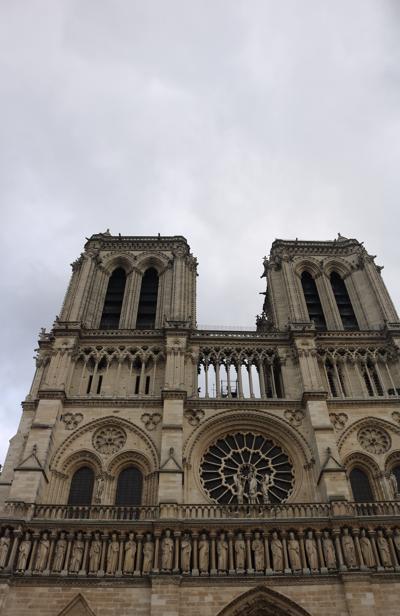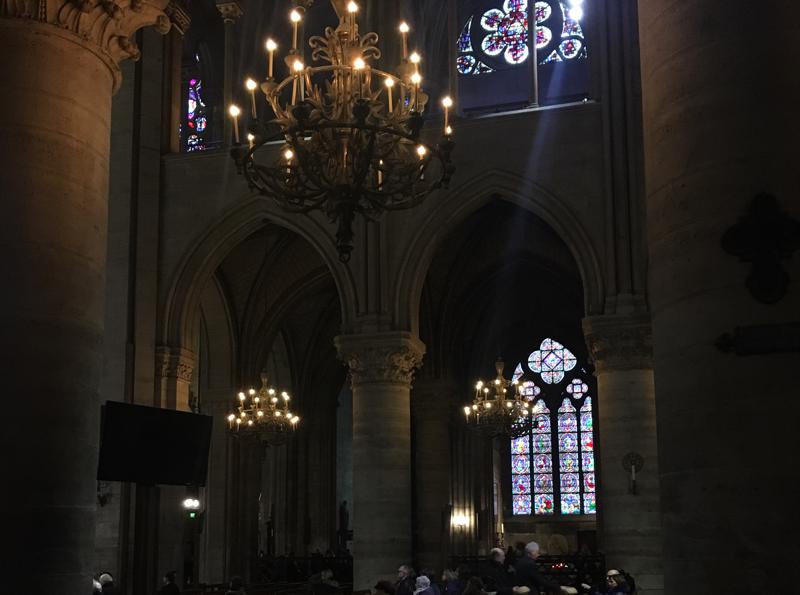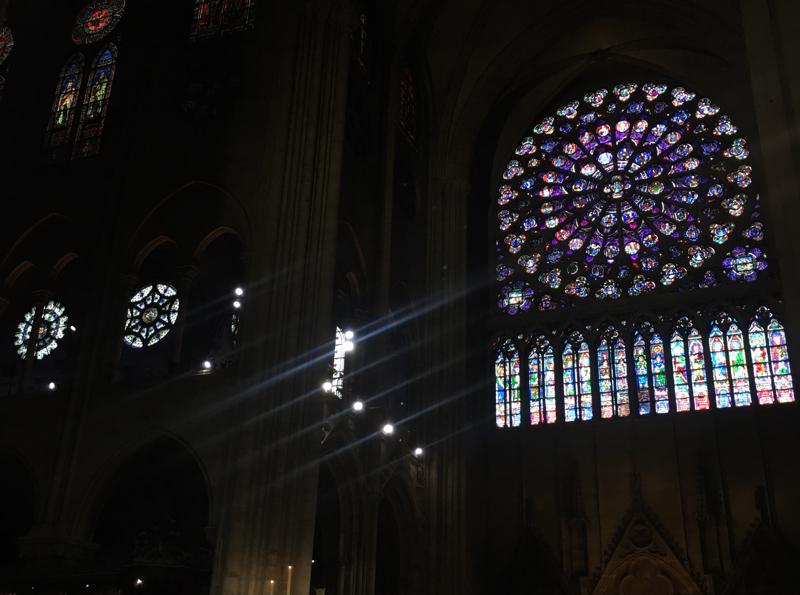Taylor's Diary
The Notre Dame began construction around 1163 during the reign of King Louis VII Le Jeune. This was also during the time of Pope Alexander III. I was not completed until 1345. No one knows for sure who the first architect was of this marvelous construction, but there is a list of those who were a part of this journey over the 200 year construction including Pierre de Montreuil, Jean Ravy, and more. John Ruskin, a Victorian art and social critic wrote an influential piece on architecture, stating that there are seven "lamps" that are principles for creating a a true beauty that will thrive through many years. One of these lamps is focused on the power of a structure. The Notre Dame qualifies greatly as it stands at 35 meters high, 48 meters wide, and 130 meters long. The structure creates a great shadow that occupies the center of Paris representing the firm foundation of this city's history. It's sublimity and Gothic style gives life to the rest of the city around it. I see this as the reason why it was able to withstand the mistreatment during several wars. Another lamp of Ruskin's seven is sacrifice which is clearly seen in the Notre Dame's architecture and history. To even construct it, the Church of Saint-Etienne had to be demolished. This showed a change in the status of the city's capital and obedience to what they believed. It was almost like a new offering to God, a monument for the Virgin Mary. Even through the years, pieces were hidden to be protected from Nazis or other enemies in order to keep this place sacred. It's theological symbolism is clear in its stain glass, sculptures, and protection. This church is seen as a majestic ship for those to connect with the Lord. It is a birthplace for a fresh wave of religion. The deep sacrifice, beautiful power, and theological symbolism of the Notre Dame are some of the many reasons that it is one of the most visited places in Europe.
taymthom
22 chapters
16 Apr 2020
Notre Dame/Old Paris
Paris, France
The Notre Dame began construction around 1163 during the reign of King Louis VII Le Jeune. This was also during the time of Pope Alexander III. I was not completed until 1345. No one knows for sure who the first architect was of this marvelous construction, but there is a list of those who were a part of this journey over the 200 year construction including Pierre de Montreuil, Jean Ravy, and more. John Ruskin, a Victorian art and social critic wrote an influential piece on architecture, stating that there are seven "lamps" that are principles for creating a a true beauty that will thrive through many years. One of these lamps is focused on the power of a structure. The Notre Dame qualifies greatly as it stands at 35 meters high, 48 meters wide, and 130 meters long. The structure creates a great shadow that occupies the center of Paris representing the firm foundation of this city's history. It's sublimity and Gothic style gives life to the rest of the city around it. I see this as the reason why it was able to withstand the mistreatment during several wars. Another lamp of Ruskin's seven is sacrifice which is clearly seen in the Notre Dame's architecture and history. To even construct it, the Church of Saint-Etienne had to be demolished. This showed a change in the status of the city's capital and obedience to what they believed. It was almost like a new offering to God, a monument for the Virgin Mary. Even through the years, pieces were hidden to be protected from Nazis or other enemies in order to keep this place sacred. It's theological symbolism is clear in its stain glass, sculptures, and protection. This church is seen as a majestic ship for those to connect with the Lord. It is a birthplace for a fresh wave of religion. The deep sacrifice, beautiful power, and theological symbolism of the Notre Dame are some of the many reasons that it is one of the most visited places in Europe.



1.
The First 48 Hours
2.
Memorable Moment
3.
Chateau de Versailles
4.
Arts & Humanities
5.
My February Excursion!
6.
Notre Dame/Old Paris
7.
Tenaciously Missional #1
8.
The Louvre
9.
Paris People
10.
Challenges in Paris
11.
Tenaciously Missional #2
12.
Musee d'Orsay
13.
Spring Break Adventures
14.
March DIY Excursion
15.
Basilique Saint-Denis
16.
French Cuisine
17.
French Currency
18.
Religious Experiences
19.
April DIY Excursion
20.
Normandy
21.
Fromagerie
22.
Easter in Paris